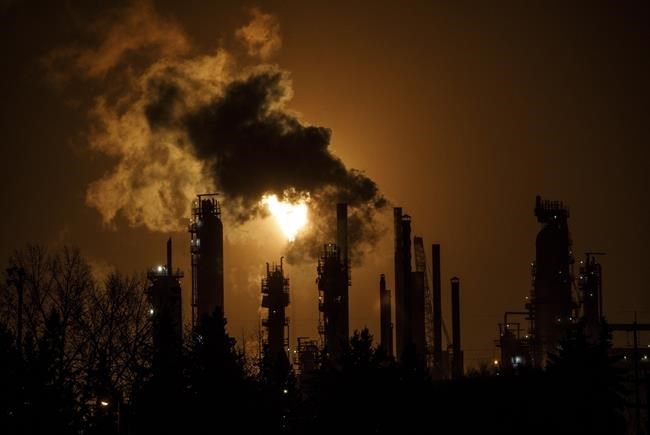CALGARY — Even if no new government climate policies are introduced before 2030, global demand for fossil fuels will still peak before the end of the decade, a new report by the International Energy Agency states.
The report released Tuesday says the worldwide rollout of key technologies such as renewable power, electric vehicles and heat pumps is happening so quickly that demand for coal, oil and natural gas is set to peak within the next 10 years.
The IEA says this means that no new major oil and gas extraction projects are needed anywhere around the globe, nor any new coal mines, mine extensions or unabated coal plants.
"If the world is successful in bringing down fossil demand quickly enough to reach net zero emissions by 2050, new projects would face major commercial risks," the IEA stated.
Still, the report's authors pointed out that while the transition is occurring, more still needs to be done to hold global warming to the 1.5-degree Celsius target the international community agreed to at the 2015 climate summit in Paris.
While 1.5 C is still achievable, the IEA said, the paths available to get there are narrowing. Global carbon dioxide emissions from the energy sector reached a record high of 37 billion tonnes in 2022.
The world is set to invest a record US$1.8 trillion in clean energy in 2023, but the IEA said that needs to climb to US$4.5 trillion by the early 2030s in order to achieve net zero by 2050.
“The energy sector is changing faster than many people think, but more needs to be done and time is short," the report states.
For all countries, measures including ramping up renewables, improving energy efficiency, cutting methane emissions and increasing electrification will be necessary to achieve global climate targets, the IEA said.
All of these things are possible using existing and cost-effective technologies, it said. For example, reducing methane emissions from oil and natural gas operations by 75 per cent from today's levels would cost US$75 billion in cumulative spending to 2030, the IEA estimates — the equivalent of just two per cent of the net income brought in by the industry in 2022.
While major investment in new oil production is not required, continued investment in existing oil and gas assets and already approved fossil fuel projects will be necessary, the IEA said, in order to avoid damaging price spikes or supply gluts during the energy transition.
In addition, it said rapid progress on carbon capture and storage will be required before 2030 in order to hold temperatures to 1.5 C. While the number of proposed carbon capture projects worldwide nearly tripled in 2021 and has doubled again since then — thanks to strong policy support, particularly in the U.S. — only about five per cent of announced projects have reached the final investment stage.
"Although the recent surge of announced projects for CCUS and hydrogen is encouraging, the majority have yet to reach final investment decision and need further policy support to boost demand and facilitate new enabling infrastructure," the IEA stated.
The IEA report also urges governments to adopt a "build big" mentality. Electricity transmission and distribution grids need to expand by about two million kilometres each year by 2030 to reach the IEA's net-zero scenario, but the organization pointed out that building grids today can take more than a decade.
"We need massive growth of battery energy storage and demand response; expanded, modernized grids; more dispatchable low-emission capacity, including fossil fuel capacity with CCUS, hydropower, biomass, nuclear and hydrogen and ammonia-based plants," the report stated.
All in all, to hold global temperatures to 1.5 C and avoid the most catastrophic impacts of warming, by 2035 emissions need to have declined by 80 per cent from 2022 levels in developed countries and by 60 per cent in developing countries, the IEA said.
Failing to make significant progress before 2035 would result in a steeper temperature increase and would force reliance on carbon removal technologies in the latter half of this century, the report warns.
"Removing carbon from the atmosphere is costly and uncertain," the IEA said. "We must do everything possible to stop putting it there in the first place."
This report by The 91įŁ┤┤ Press was first published Sept. 26, 2023.
Amanda Stephenson, The 91įŁ┤┤ Press


